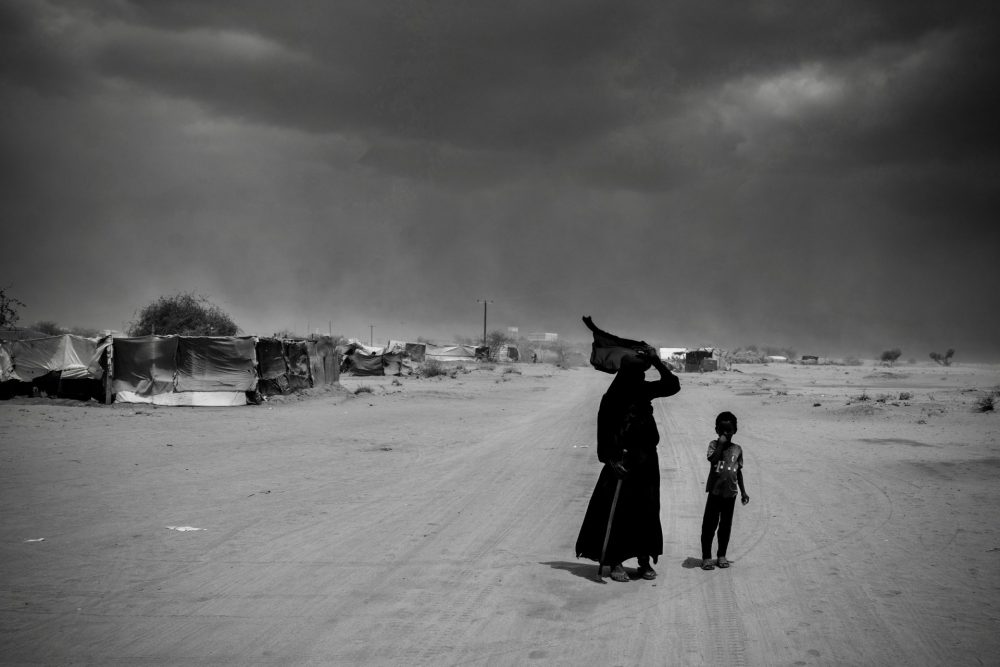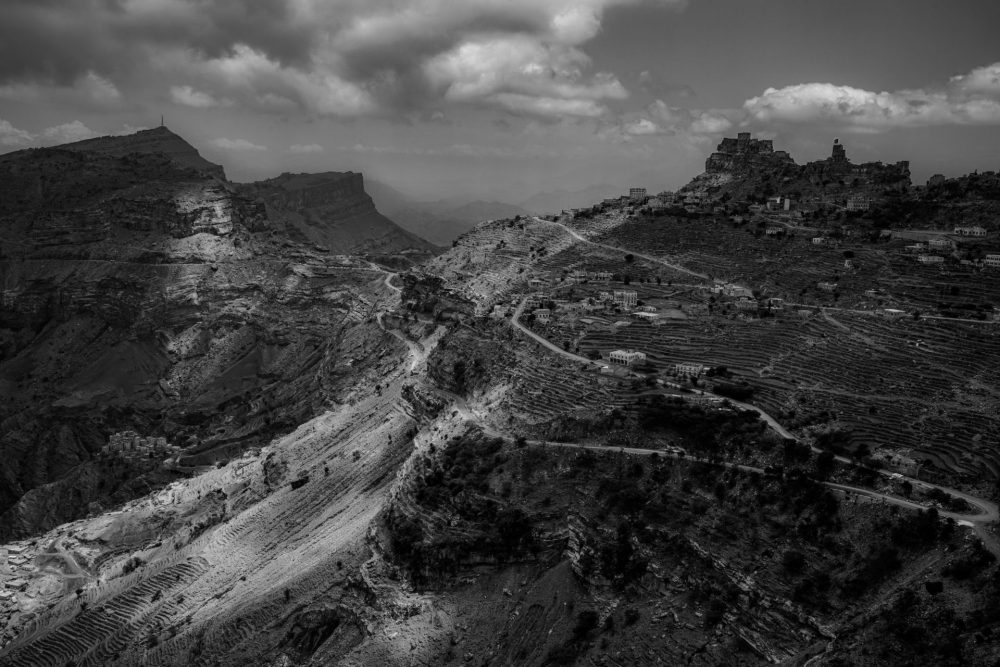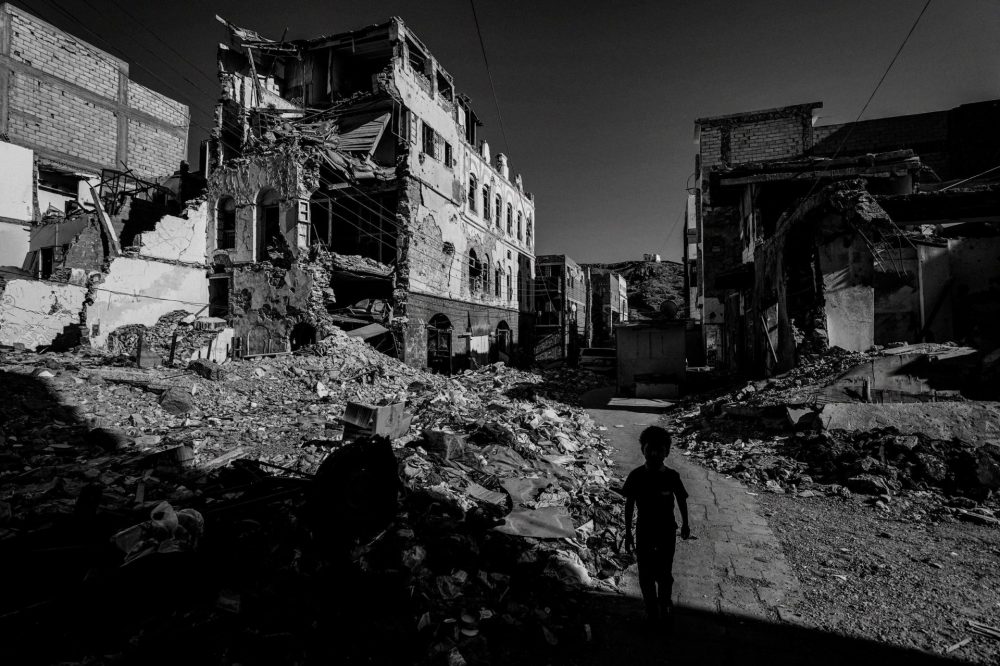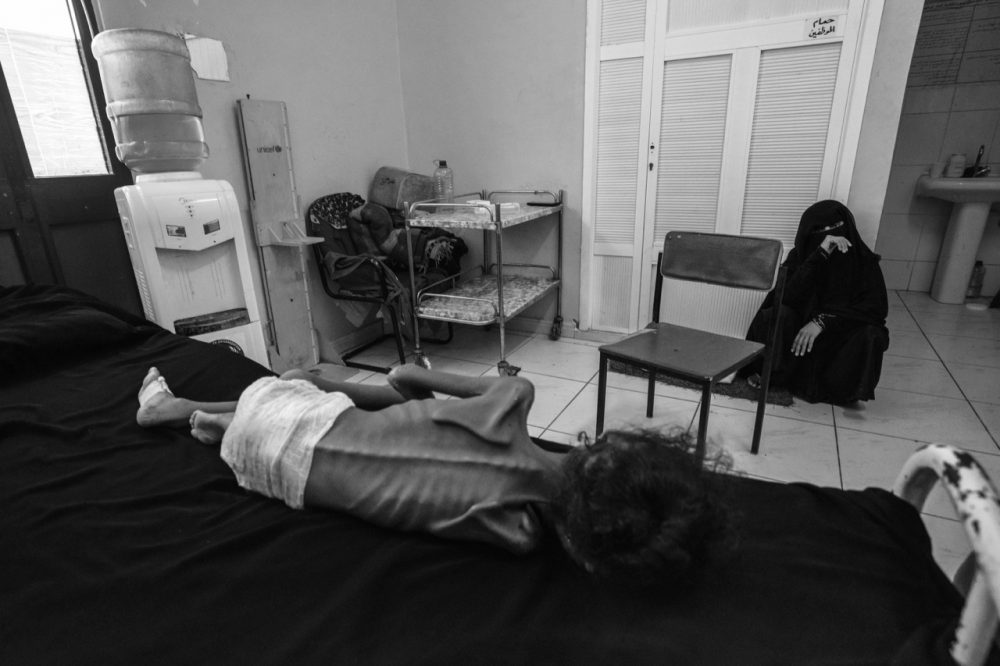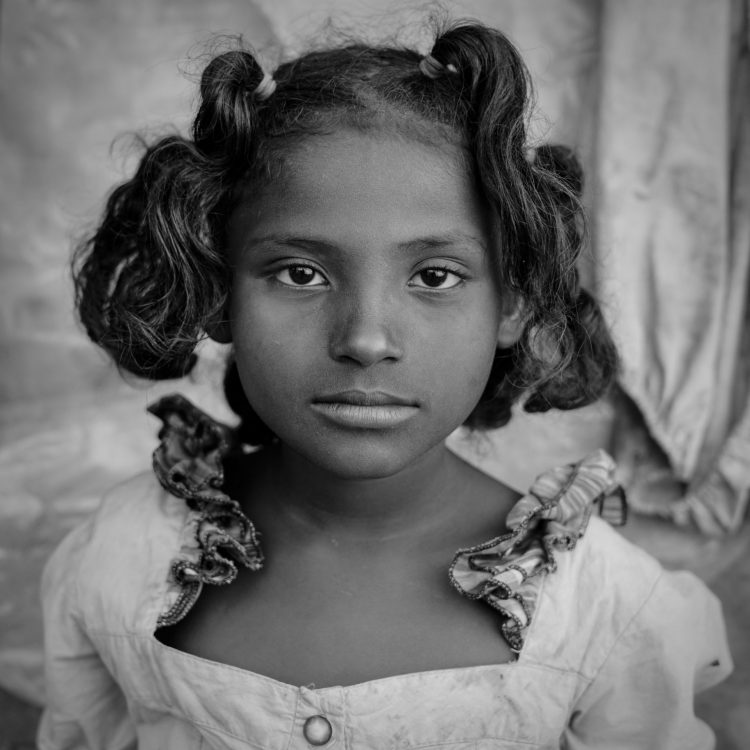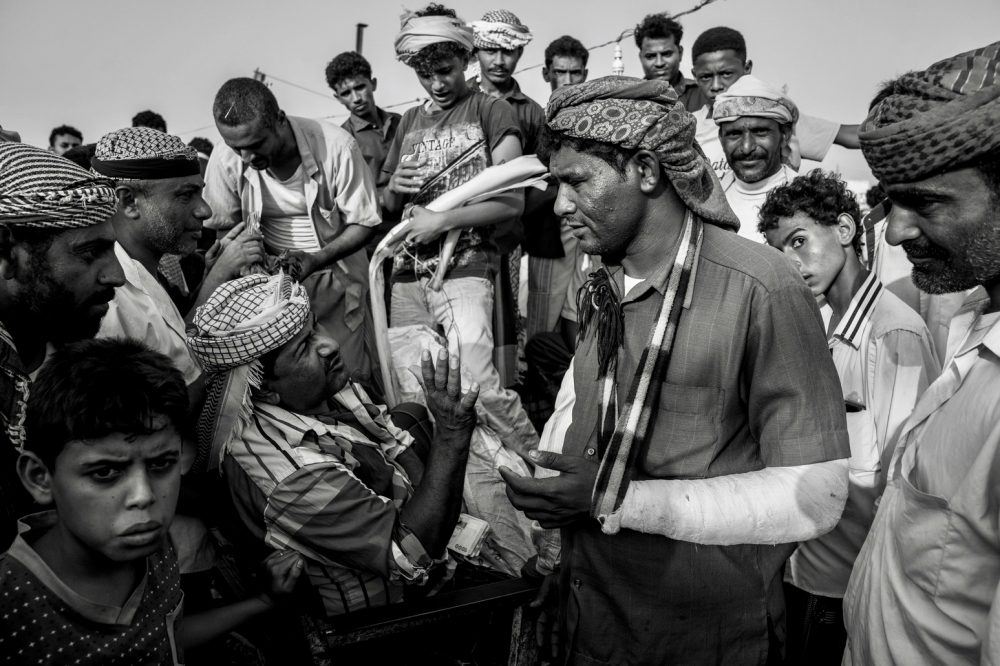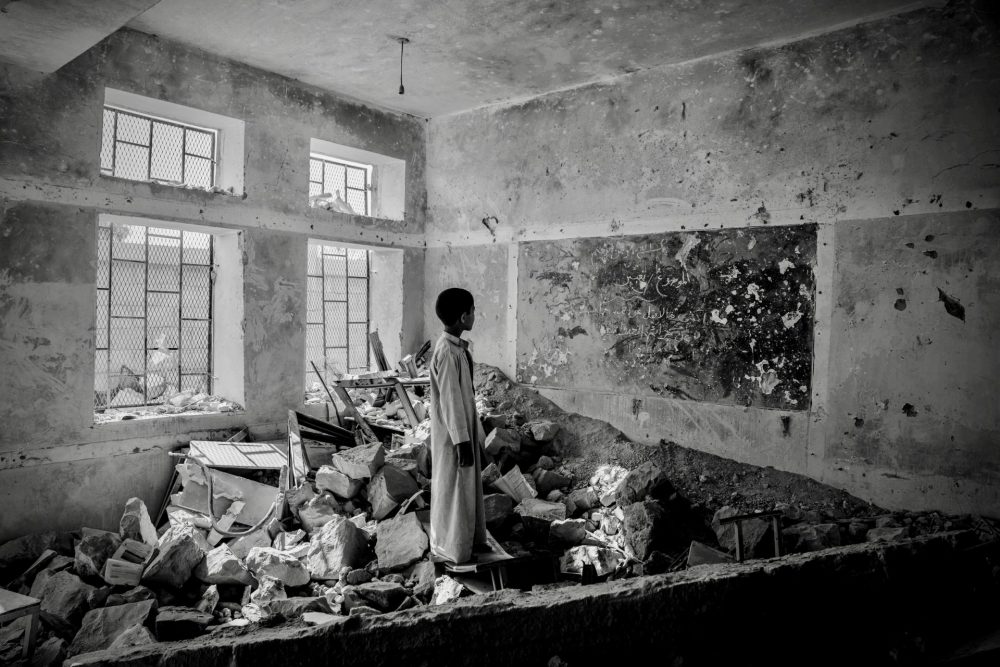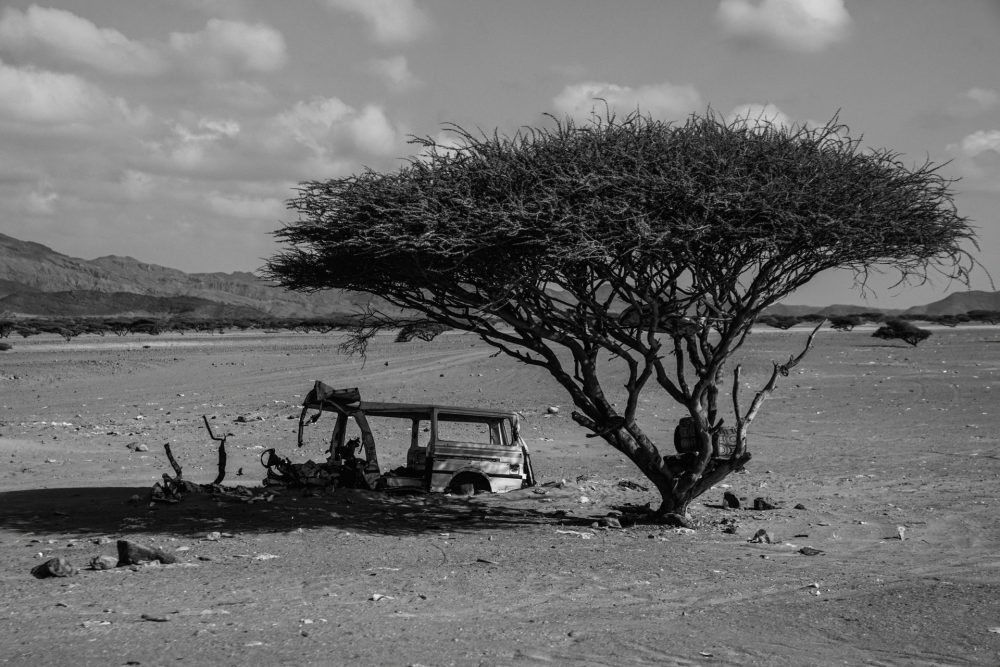Yemen : Proxy War Turmoil
Giles Clarke
2017-2019 — Yemen
About this series
The building fury of a gathering storm took shape In the distance as a wall of swirling sand began to rise before me. The sky darkened while mushrooming grey clouds jostled above the ominous sandstorm. In this moment,I saw the plight of this beleaguered country unfolding: a turbulent scene that personified the chaotic struggle that is Yemen today. This was yet another powerful force, albeit a natural one, about to show its might and destruction as scurrying figures disappeared into their ragged tents -still torn and flapping from earlier piercing sand squalls.
Over the past five years, the people of Yemen have been continually battered by the storm of war and conflict. As heavyweight multinational powers vie for strategic power and political gain in the region, the Yemeni population have been strangled by the resulting violence, hunger, and extreme poverty. According to a 2019 report by Armed Conflict, Location and Event Data (ACLED), the death toll has reached over 90,000, with hundreds of thousands injured since the war began.
Yemen:Proxy War Turmoil captures poignant moments recorded during extensive assignments throughout the country from April 2017 to March 2019.
In the book, I concentrate not only on a region mired in deep struggle, but also on a people who still possess a deep-rooted tribal resilience born from centuries of defending their land from invasion and colonization.
Photographer: Giles Clarke
Nationality: British, UK
Based in: New York, USA
Website: www.gilesnclarke.com
Instagram: @clarkegiles
Giles Clarke is a photojournalist/traveller based in New York City and focusing on capturing the human face of current and post-conflict issues throughout the world. Since 2010, he has traveled to 70 countries, including multiple visits to cover the conflict in Yemen, from which he created the Proxy War Turmoil series.
Clarke’s work has been featured by The United Nations (OCHA), The New York Times, Amnesty International, CNN, The Guardian, Global Witness, TIME, The New Yorker, National Press Photographers Association, Paris Match, and many others. He was named The Imagely Fund Fellow for his work in Yemen in 2018, and was the Lucie Foundation’s ‘Deeper Perspective Photographer of the Year’ in 2017.


